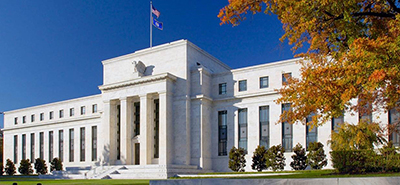
Fed Cuts Interest Rates 50 Basis Points; MBA Economist Weighs In

The Federal Reserve cut interest rates by 50 basis points Sept. 18.
It was the Fed’s first cut since 2020.
“Recent indicators suggest that economic activity has continued to expand at a solid pace. Job gains have slowed, and the unemployment rate has moved up but remains low,” the FOMC statement said. “Inflation has made further progress toward the Committee’s 2% objective but remains somewhat elevated.”
Mortgage Bankers Association SVP and Chief Economist Mike Fratantoni reacted to the announcement.
“The FOMC lowered rates by 50 basis points at its September meeting and signaled that this is the first cut in a series that should bring rates down by about 2 percentage points by the end of 2025,” he said.
Fratantoni noted that there was speculation about the size of the cuts over recent days, so the decision may spur some temporary volatility.
“The FOMC projections highlighted that inflation is returning to target more quickly than the Committee had expected in June and that the unemployment rate has moved higher and is likely to stay higher than expected. While not likely to be in a recession, the U.S. economy is likely in for a period of slower economic growth. It is also important to note that the FOMC’s estimates of the neutral fed funds rates keeps moving up, and that the committee members see a range of outcomes, from 2.5-3.5% as consistent with neutral in the long run,” he continued.
“The Fed’s MBS holdings have continued to gradually decline with QT. While there no changes to the pace of QT with this statement, faster refinances will result in the MBS portfolio paying off more quickly as prepayments have been well below the cap since the beginning of QT,” Fratantoni said. “Mortgage rates likely had this cut–and this expected rate path–priced in, and lower mortgage rates, now close to 6%, have resulted in much more refinance and some additional purchase activity in recent weeks. We do expect that if mortgage rates remain near these levels, it will support a stronger than typical fall housing market and suggest that next spring could see a real rebound in activity.”
The full FOMC statement read:
Recent indicators suggest that economic activity has continued to expand at a solid pace. Job gains have slowed, and the unemployment rate has moved up but remains low. Inflation has made further progress toward the Committee’s 2% objective but remains somewhat elevated.
The Committee seeks to achieve maximum employment and inflation at the rate of 2% over the longer run. The Committee has gained greater confidence that inflation is moving sustainably toward 2%, and judges that the risks to achieving its employment and inflation goals are roughly in balance. The economic outlook is uncertain, and the Committee is attentive to the risks to both sides of its dual mandate.
In light of the progress on inflation and the balance of risks, the Committee decided to lower the target range for the federal funds rate by 1/2 percentage point to 4-3/4 to 5%. In considering additional adjustments to the target range for the federal funds rate, the Committee will carefully assess incoming data, the evolving outlook, and the balance of risks. The Committee will continue reducing its holdings of Treasury securities and agency debt and agency mortgage‑backed securities. The Committee is strongly committed to supporting maximum employment and returning inflation to its 2% objective.
In assessing the appropriate stance of monetary policy, the Committee will continue to monitor the implications of incoming information for the economic outlook. The Committee would be prepared to adjust the stance of monetary policy as appropriate if risks emerge that could impede the attainment of the Committee’s goals. The Committee’s assessments will take into account a wide range of information, including readings on labor market conditions, inflation pressures and inflation expectations, and financial and international developments.
Voting for the monetary policy action were Jerome H. Powell, Chair; John C. Williams, Vice Chair; Thomas I. Barkin; Michael S. Barr; Raphael W. Bostic; Lisa D. Cook; Mary C. Daly; Beth M. Hammack; Philip N. Jefferson; Adriana D. Kugler; and Christopher J. Waller. Voting against this action was Michelle W. Bowman, who preferred to lower the target range for the federal funds rate by 1/4 percentage point at this meeting.
